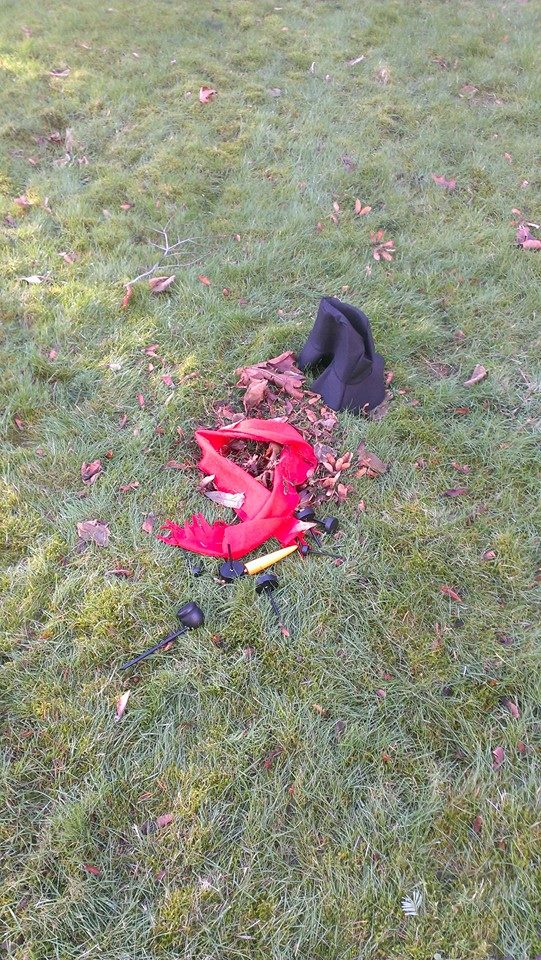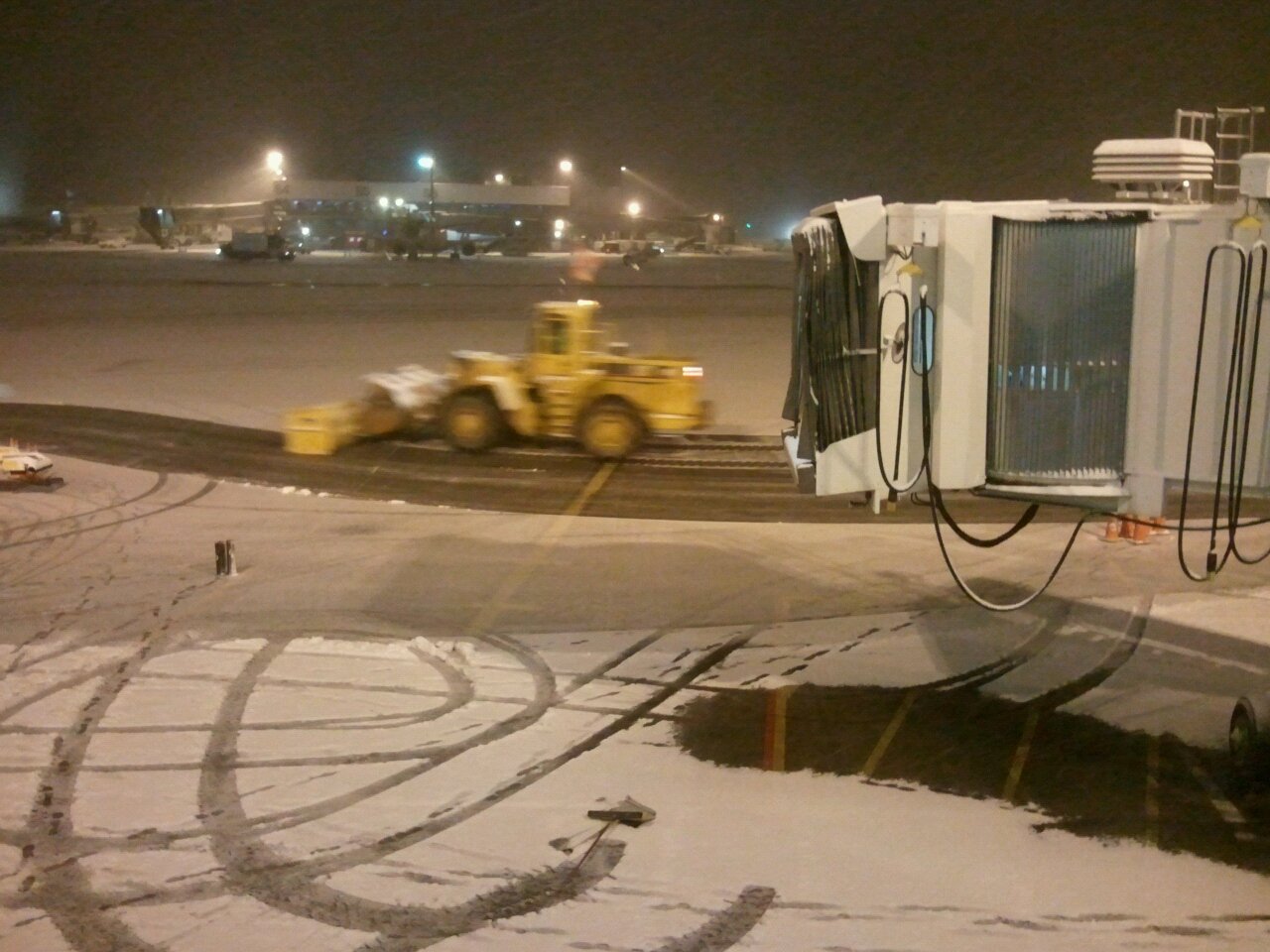I am writing this post for my fellow Rochesterians, to try to convey the scope of transformation that would envelope the city if Amazon were to site their headquarters here.
When I hired into Amazon in 2011, they were in the midst of constructing their 11-building campus in South Lake Union (SLU). The 2007 press release announcing this development is a remarkable read, because it reads like a recent history looking back from 2011. The proposal undoubtedly began life as a press release, since “working backwards” from fictionalized press releases is endemic to Amazon’s business processes.
When I started at Amazon, I was working at a building on Terry Avenue North and the SLU buildings on Boren Avenue were still under construction. Amazon hadn’t yet expanded into the Denny Triangle – that project was announced in 2012.
When you see construction every day, it’s easy to take for granted. Nevertheless, the scale of transformation was so dramatic that I stopped to snap a picture every once in a while. They say a picture is worth a thousand words, so I went spelunking in my own Facebook feed to find pictures that I took while I worked at Amazon (2011-2016).
I took many shots from the kitchen in Blackfoot, the building where I spent most of my Amazon career. The kitchens were stacked one on top of the other for 20+ stories (it is a 37-story building), mostly I think to keep the executive assistants and other key decision-makers from fighting over the office space with the best views. Here’s a view of the Space Needle taken from the Blackfoot kitchen, just before the Seahawks won their first Super Bowl:
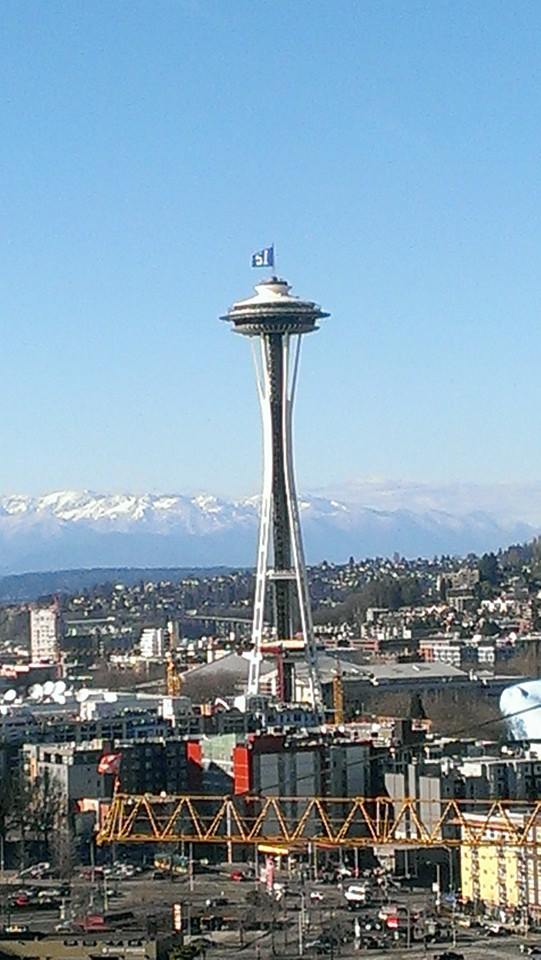
The construction crane in the foreground is for a new residential building at 8th and Westlake.
I don’t have a picture from the Blackfoot kitchen, but a Facebook post from April 10, 2016 says: “This building is now done and fully occluded the view of the Space Needle.” I did take a few pictures of the progress, though. From September 2013:
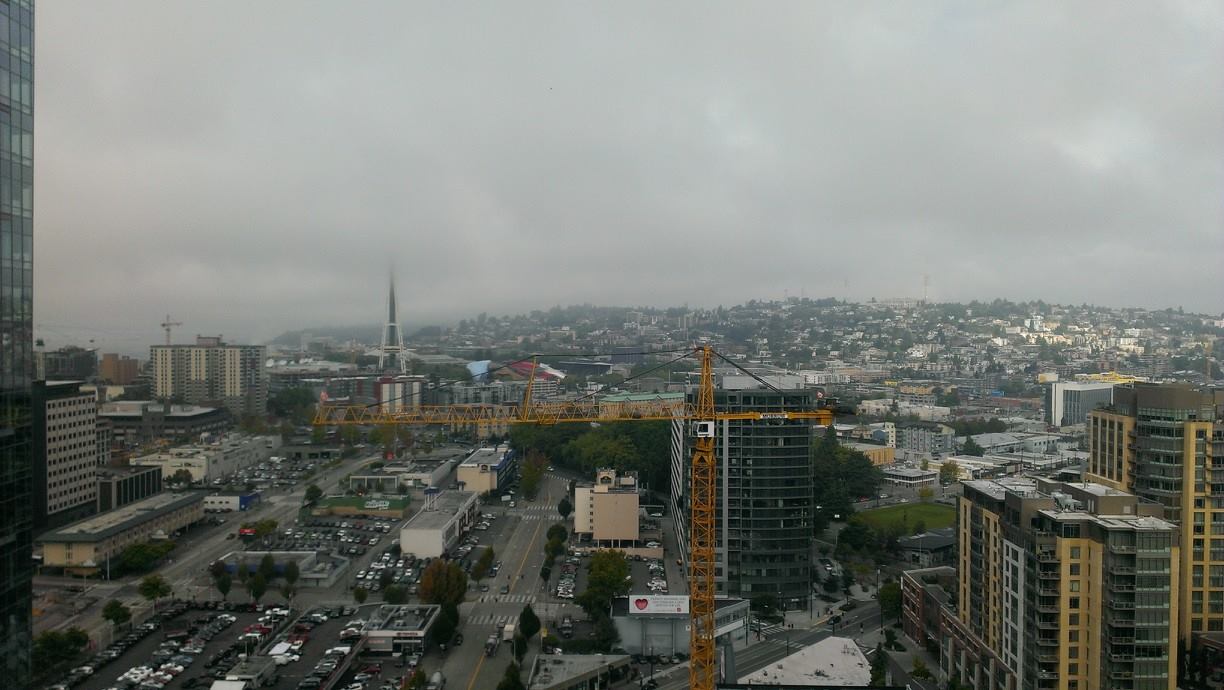
From April 9, 2014 – looking down this time:
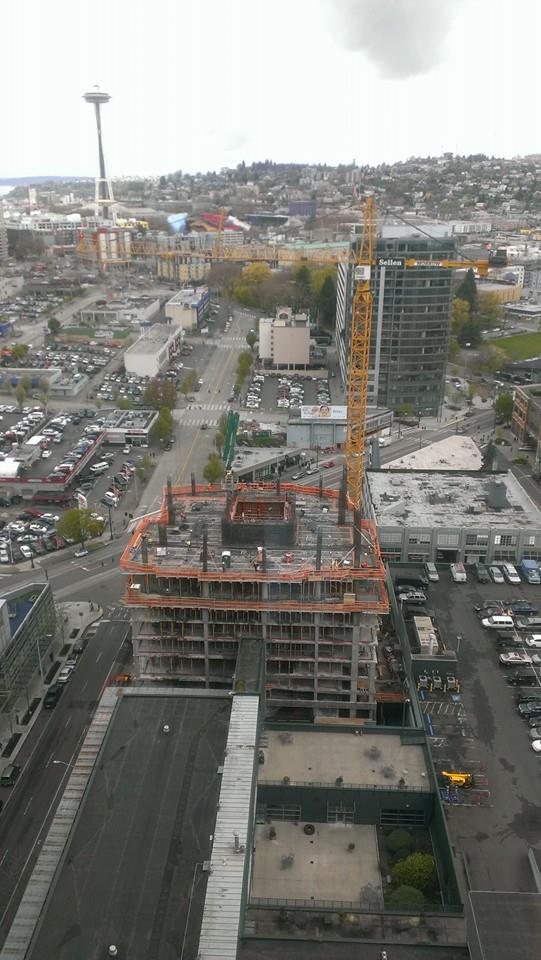
And courtesy of Google Streetview, here’s a view of the finished building from the intersection of 8th Avenue and Westlake:
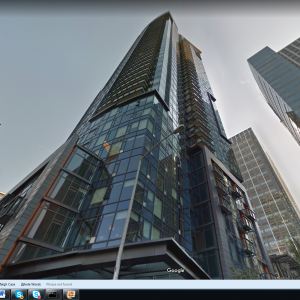
(That’s Blackfoot peeking out on the right.)
I wish I had a picture of the ugly little building that was there before this residential tower was built.
I took a few pictures of the South Lake Union campus under construction, too. Here’s a picture of a big hole in the ground on Boren Avenue:
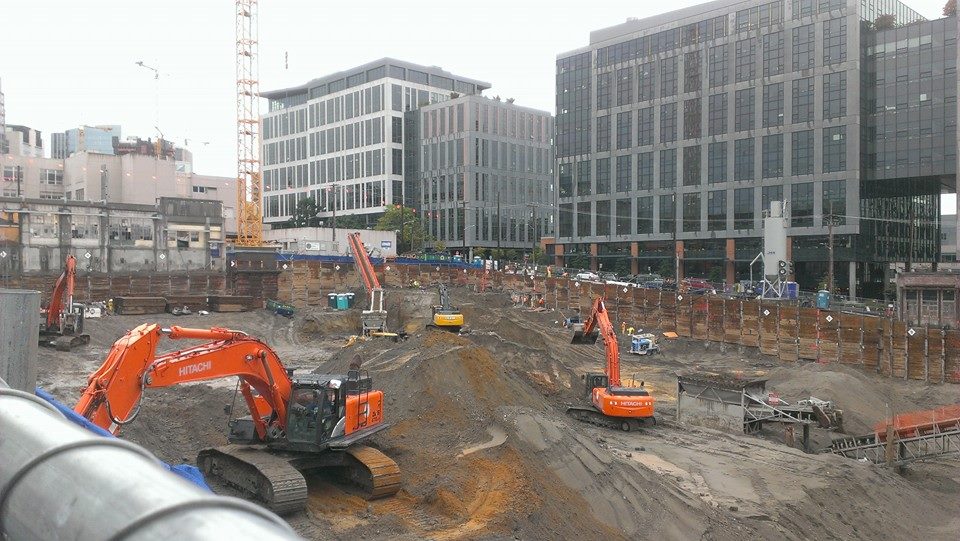
Here’s a shot of another development on Boren where they were taking care to preserve the original buildings’ walls:
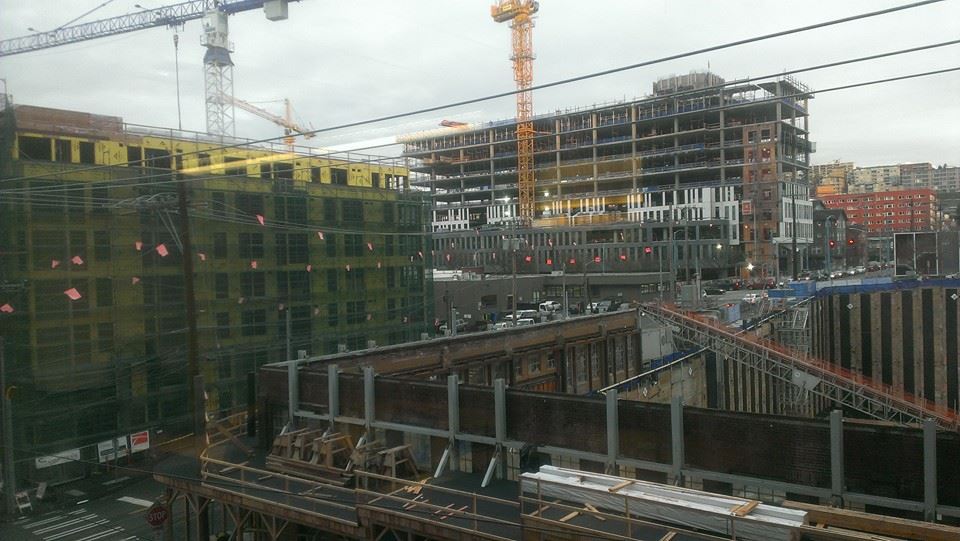
This shot of SLU that I took in June 2014 shows five (5) construction cranes in the field of view:
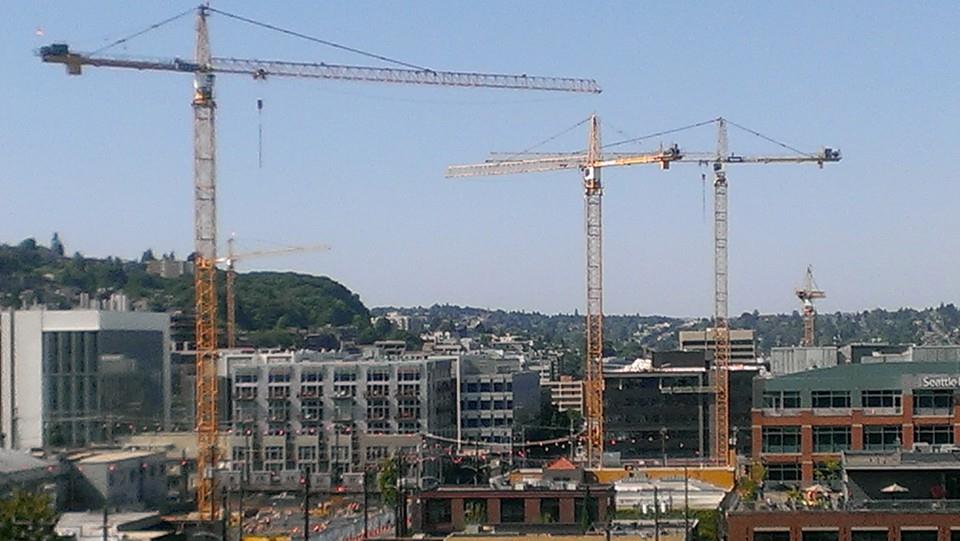
From my office (on the opposite side of the kitchen) in Blackfoot, I had a front row seat of the demolition and early construction of another building on 8th Avenue. The novel manner in which they gutted the interior of the building caught my eye:
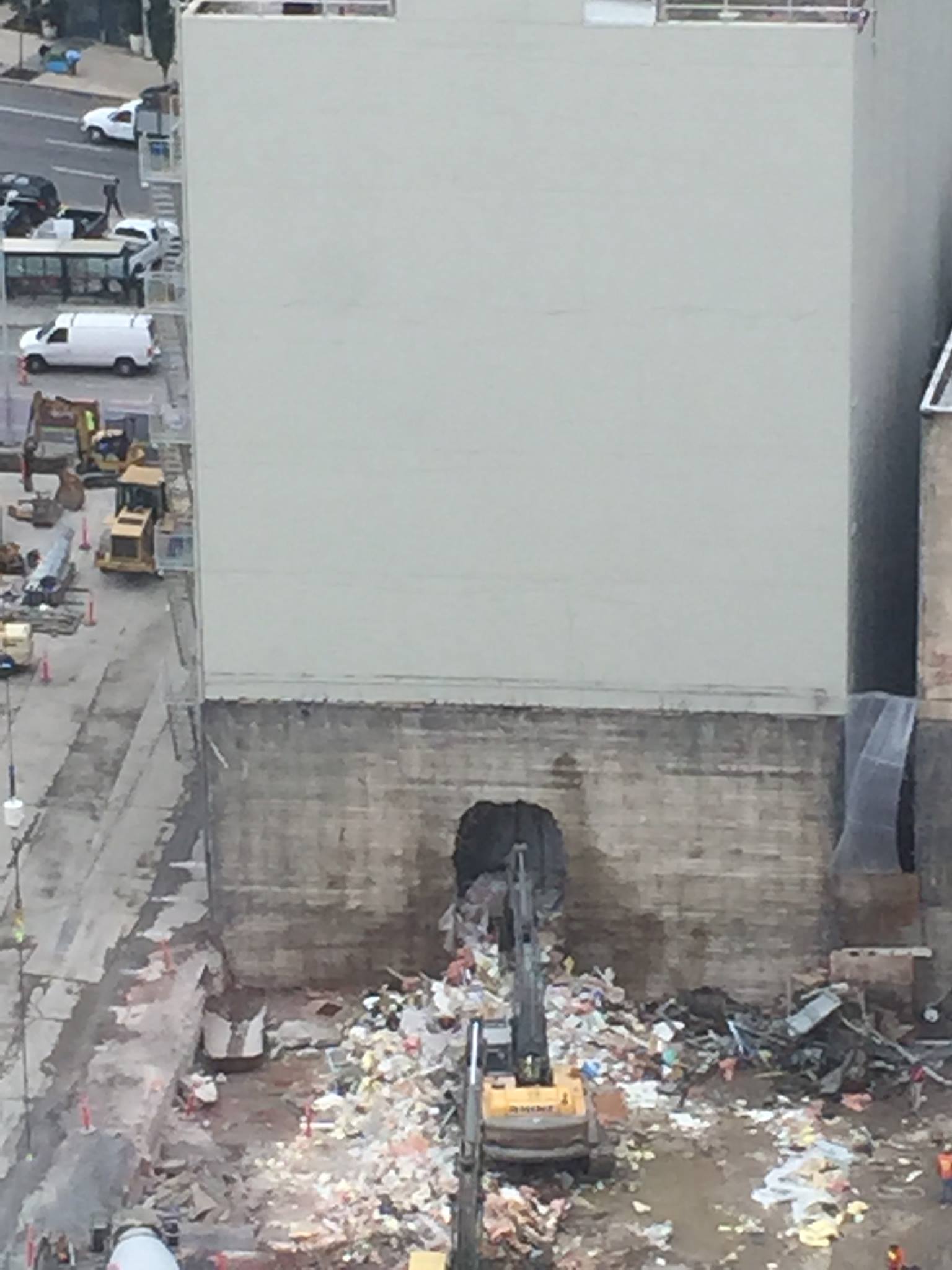
The above photo is a closeup of the two buildings featured below:
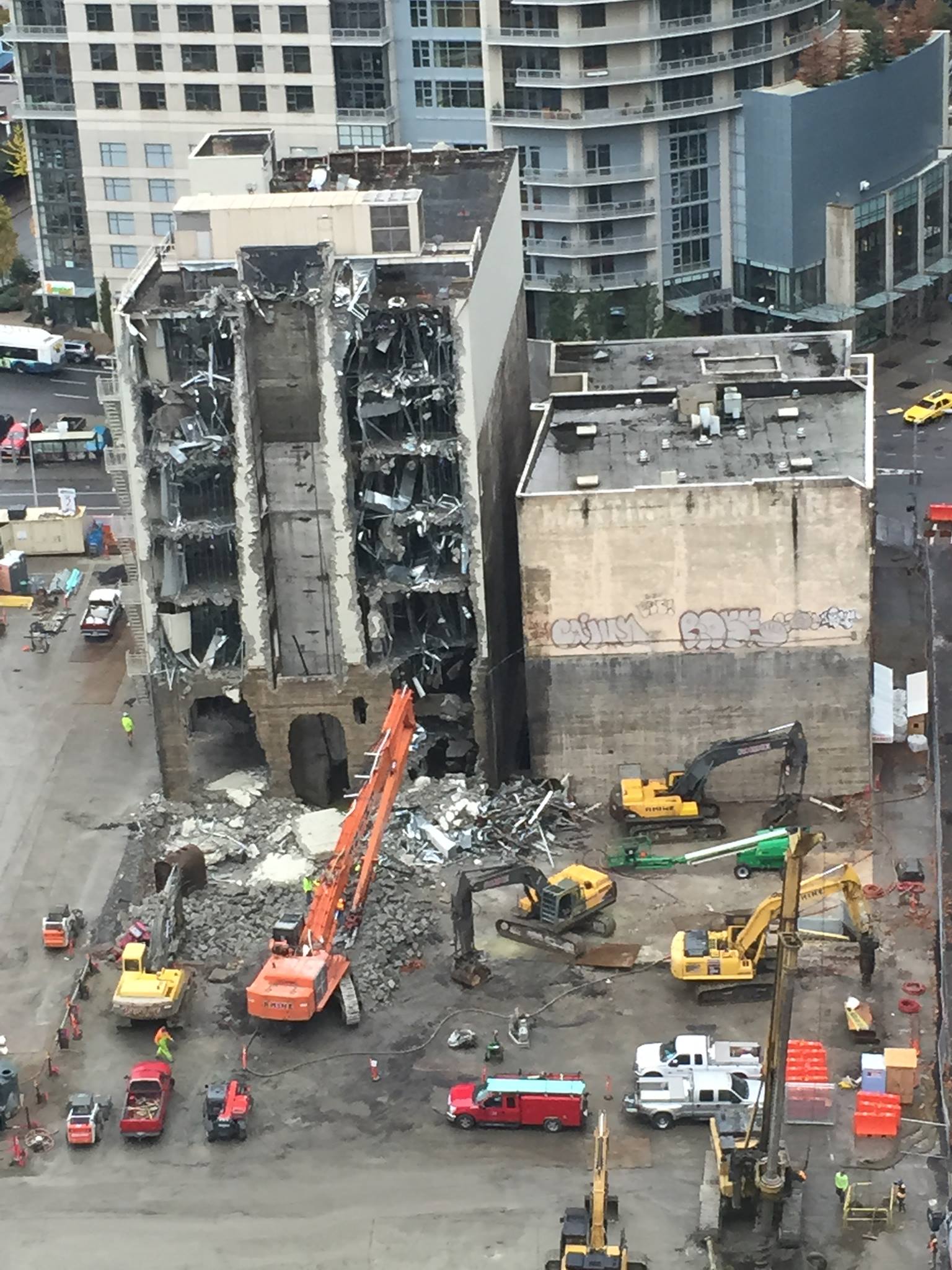
Finally, I Facebooked “The building is gone”:
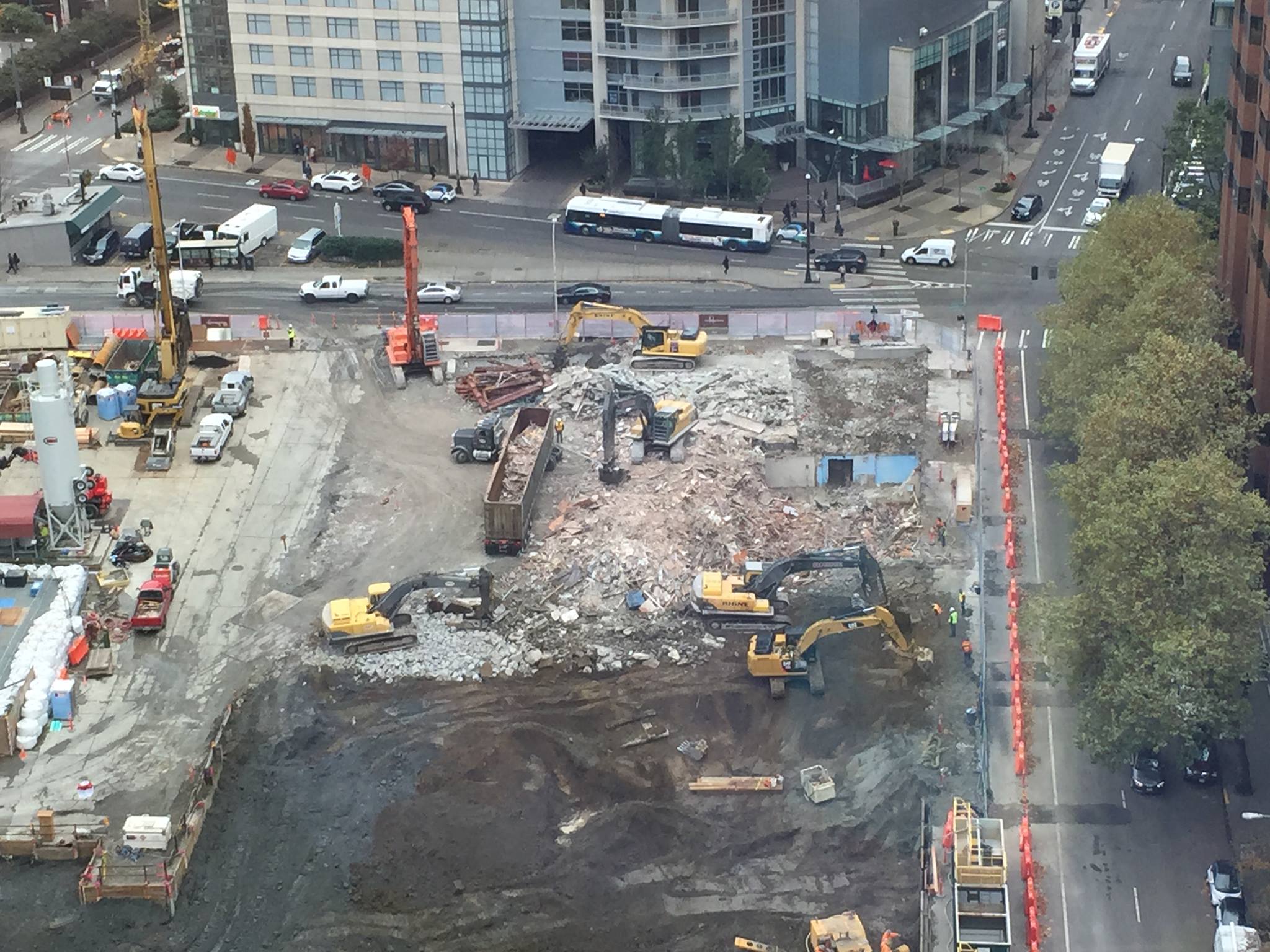
And they dug an enormous hole where the building had been, and started using a novel concrete shooting rig from the neighboring plot:
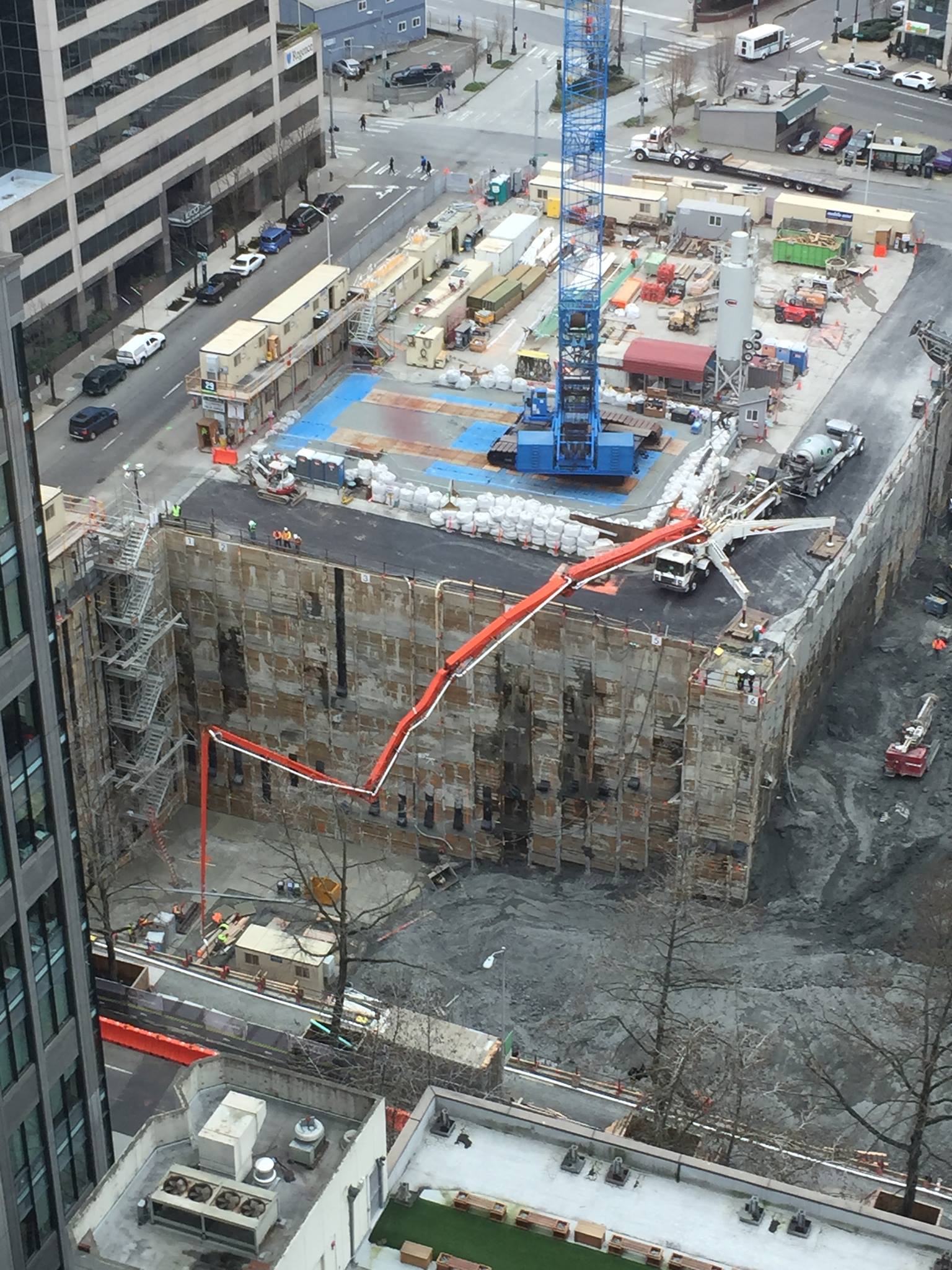
Another picture of the concrete shooter:

While visiting other buildings on campus, I took a few pictures in passing of the incredible $2B+ development codenamed “Rufus 2.0.” The flagship building, called Doppler after the codename of the Amazon Echo, was put into service just before I left Amazon. Here is a picture of the big hole in the ground from June 2014:
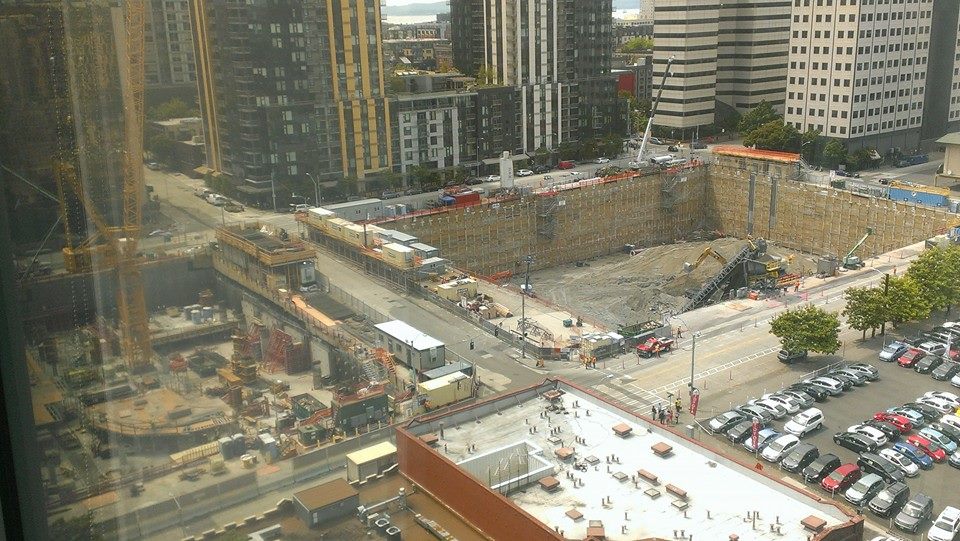
And here’s a picture of its elevator core from November 2014:
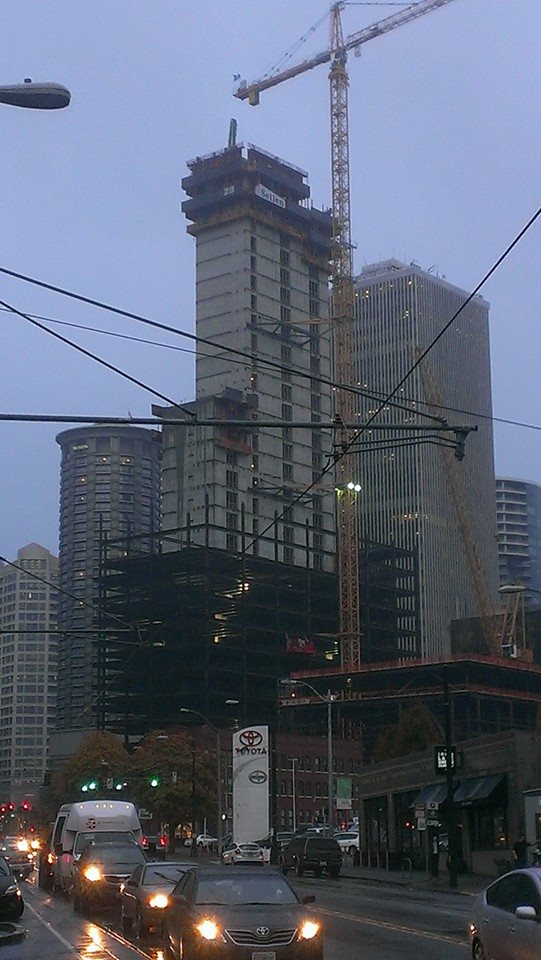
Here’s a picture of the final product:
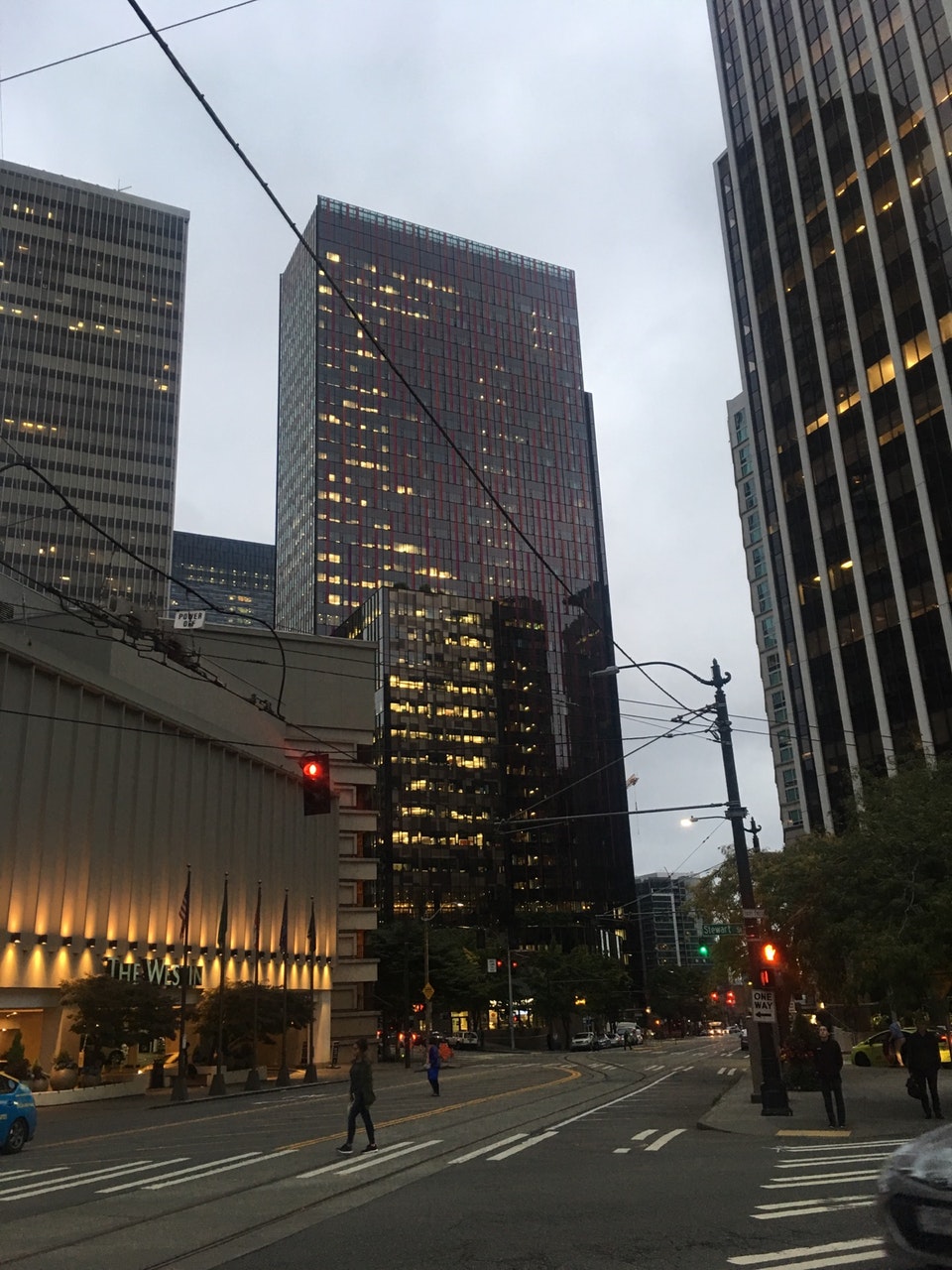
Fun fact: The three buildings that constitute the Rufus 2.0 development are each 20% taller than the tallest building in Rochester.
Finally, I want to share a few pictures of the famous Amazon garden spheres that are at the base of the Rufus 2.0 development. In April 2016, I noticed a Christmas tree on the top of one:

And while visiting a team in another building, I took this picture:

As I write this (November 2017), construction on the spheres is complete and the gardens are being installed, but they are not yet open. My friend Eugene Hsu, still at Amazon (and PMHS class of 1990!), shared this picture of one of the spheres, taken from the cafe floor of the Rufus 2.0 meeting center:
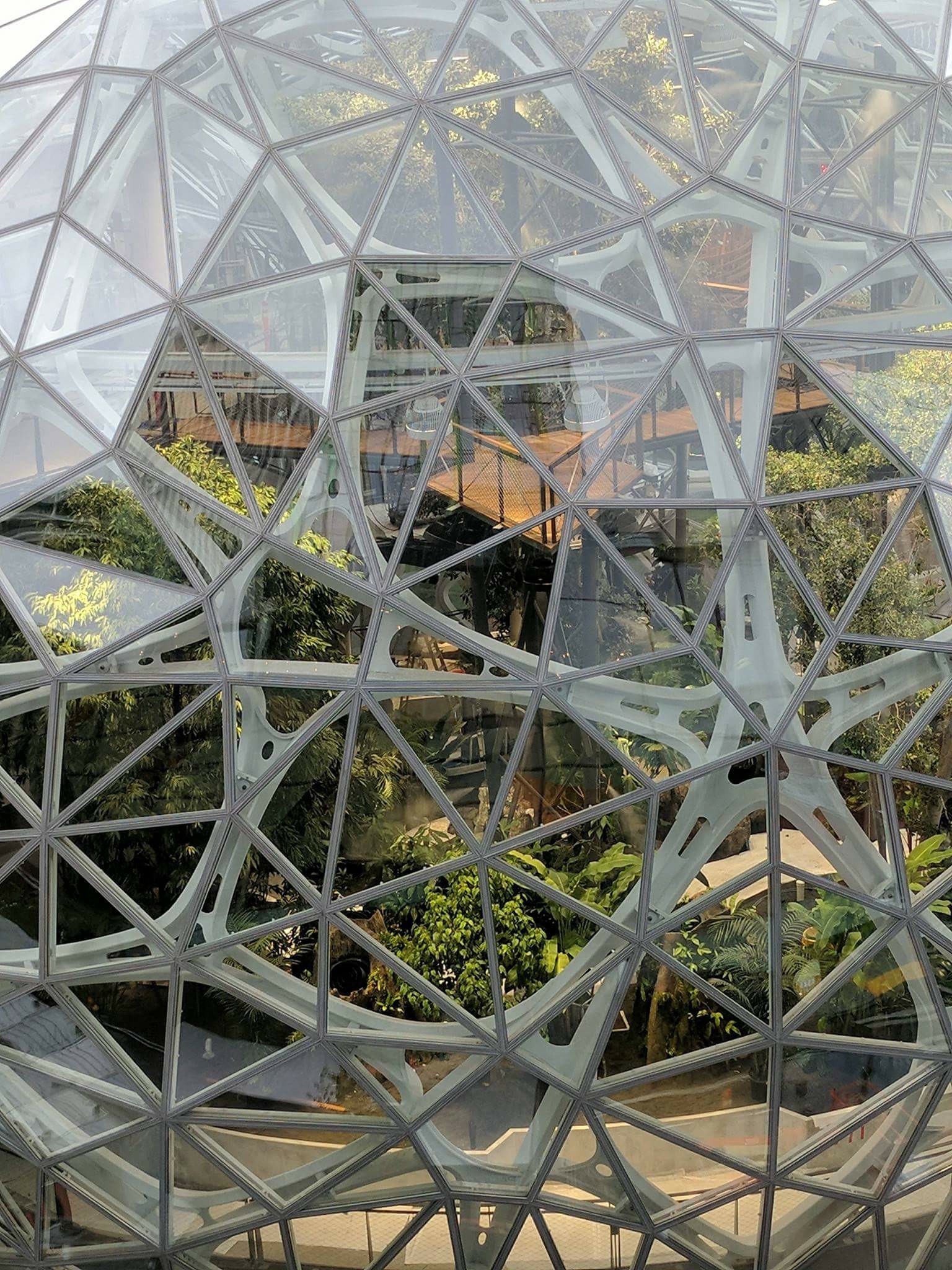
Copyright (C) 2017 by Eugene Hsu. Used with permission.
Amazon has added more than 3 million square feet of office space to Seattle since the South Lake Union project was announced. In soliciting Amazon’s second headquarters, Rochester leaders should emulate the Amazon’s Leadership Principle embodied by these projects: Think Big.
Copyright(C) 2017 by Nicholas Wilt. All rights reserved.
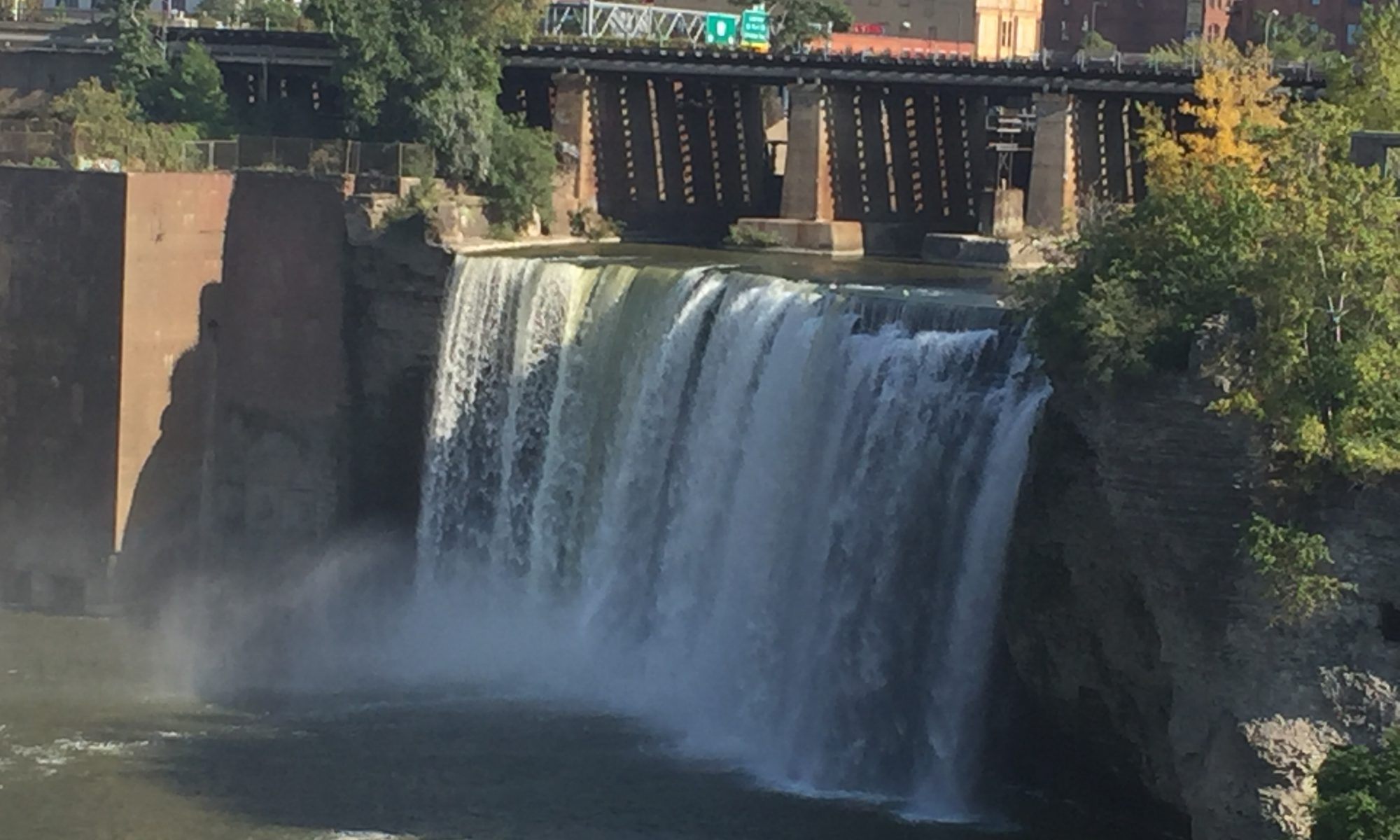
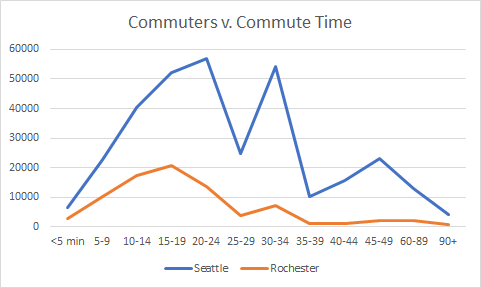
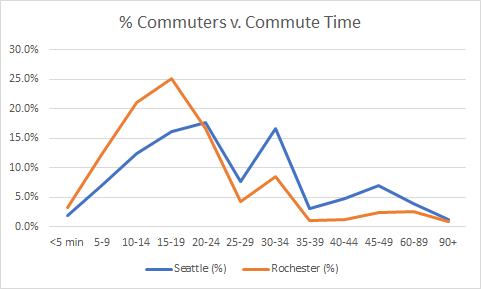 After living and working in Seattle from 1994-2002 and then 2011-2016, I think this comparison may be too favorable to Seattle!
After living and working in Seattle from 1994-2002 and then 2011-2016, I think this comparison may be too favorable to Seattle!